It’s a sunny day in Tumbaco on this early September day when we leave Santiago and his family. We landed a few days earlier in Quito, capital of Ecuator, and spent a few days in Santiago’s casa de ciclistas to get ready for the start of our big adventure. We’d been looking forward to that day for a year and a half now, researching the Internet and getting all the equipment needed, and we were excited and eager to set our feet on the pedals. Ahead of us lied the vast expanses of the Andes which we planned to cross until the southermost city in the world: Ushuaia. This would take us 6 months. The second stage of our trip would then take us in early march 2013 to Turkey, for another 8 months cycling across Central Asia. Our only companions would be two Azub 5 recumbent bicycles, which we chose for their extra comfort and robustness.
The first few days were not easy: the roads of Ecuador have no pity for cyclists. The Panamericana took us over passes exceeding 3600m and we struggled to climb gradients reaching 10%: needless to say there was a lot of pushing the bikes, especially at the beginning since we were so unfit. Actually we’d had no time to get in shape before setting off, with so much to do the previous month (paperwork, last minute buys, packing all our belongings and finding a storage space etc). It took us a month to cross Ecuador down to the Peruvian border in Macara: we cycled nearly 1000 km and climbed twice the height of Mount Everest. Progress was slow, but the landscape was never boring: from one valley to the next we were being catapulted from Switzerland to Morrocco, with sometimes a feel of amazonian forest. The people too were never the same: the people in Quito and in big cities dress and live like northern Americans, whilst people in more rural areas still look like Quechuan Indians and dress traditionally. We found that markets are a great place to observe people, and to learn about the culinary specialties of a country: we were astonished by the entire roasted porks hanging in front of eateries, waiting to be cut in pieces and served. There were also the cow hooves and the chicken legs: basically nothing is wasted and all the pieces we usually do not eat anymore in Europe are kept for the soup. Yummy!
The last days in Ecuador were incredibly hot as we rolled down towards Peru. Once on the Pacific coast we took a bus to avoid 500km of monotonous desert landscape. Lucho was waiting for us in Trujillo: “mi casa es su casa”. Lucho created the first casa de ciclistas more than 25 years ago and we were his guests number 1756 and 1757: so many people who have inspired our trip have passed through here! Lucho’s generosity is not a legend, and when we arrived he was very affected by the recent death of a Belgian cyclist only a few kilometers further south: she was overrun by a truck and the driver was released without investigation. Lucho decided to raise awareness about cyclists’ rights on the road and organized a demonstration through the city. With his fellow cyclists and other travelers staying at the casa we cycled through town in protest: Lucho was interviewed by the local TV and radio and by several newspapers. The next few days were dedicated to the visit of the archaeological sites around Trujillo (the Moche and Chimu civilizations have left vast temples and palaces) and then it was time to set off on our bikes again!
We were this time heading for the Cordillera Blanca, the highest mountain range in Peru. Reaching its foot required cycling through the Canon del Pato: a deep gorge traversed by a narrow and rough gravel road, and with many dark tunnels to cross. The 80 km of the gorge were hard work, and Angelique suffered many falls on the gravel, but once in Caraz at last we were in front of the giants: peaks higher than 6000m were waiting for us. We set of for a six day trek across the cordillera with Alvarez, our donkey driver. Unfortunately, in mid October the rainy season is already well established in the mountains and the views were often blocked. But on the last day, as we reached the top of the 4800m high Llanganuco pass, a clear sky rewarded us! We had a spectacular view on mount Huascaran, the highest summit of Peru. Exhilarated by the blue sky, we decided to make a detour to the Laguna 69: the blue turquoise lake at the foot of glaciers is one of the best hikes we made in South America.
Now acclimatized to the high altitude, we were ready to cycle across the 4120m pass at Conococha. The descent that followed is one of the most memorable rides of our trip: in an afternoon we cycled 120km from 4120m down to the Pacific coast again! But we would not stay at sea level for long: once in Lima we took a bus to Cuzco, back in the mountains. Everybody knows Cuzco, ancient capital of the Incas, for its proximity to Machu Pichu. We, however, decided to concentrate on lesser known sites closer to town, amongst which the Sacsayhuaman fort. We are still puzzled at how the Incas managed to build such perfect walls! Our road then took us across the altiplano to Lake Titicaca: there we spent a few days in Emiliana’s family on Amantani Island and observed the traditional way of life, far away from the touristy port of Puno and the fake floating islands of Uros. We visited the local school, hiked amongst the potato terrace fields to the summit of the island, and danced with our host’s kids listening to traditional songs.
After one month and a half in Peru, Bolivia was waiting for us. La Paz is only a few cycling days away from Lake Titicaca and we were once again welcomed at a casa de ciclistas, this one being run by Cristian. La Paz is an amazing city, built on the walls of a canyon splitting the altiplano in two, and surrounded by mountain peaks above 6000m. It is modern and ancient at the same time: business women walk past mamitas in traditional dress, and in the market you still find lama fetuses used as gifts to the Pachamama. After a few days exploring its avenues and dark alleys, we decided to take the bus for a side trip to Sajama National Park: close to the Chilean border, the park includes many volcanoes, amongst which the highest summit in Bolivia: Sajama (6542m). We did a few incredible hikes amongst geysers, lakes and volcanoes capped with ice, and treated ourselves with a bath in the hot springs at sunset: wonderful!
The return trip to La Paz was not so exhilarating as Angelique got one of her pannier stolen at the bus station. The police was useless of course but luckily we were able to buy most of the stolen equipment in the city: new sleeping bag, new Gore-Tex trousers, new gloves etc… So we set off again towards our next goal: the mighty Salar de Uyuni! 50km after Challapata we left the asphalt and met the dirt road: the next 135km to the northern entrance of the salar at Tahua took us 2 ½ days: the further we went the worst the road! At some point we were shaking so much on the washboard that our average speed on flat terrain did not exceed 8km/h! And before Tahua, the road became a pure mountain biking track! It was not easy but we were cycling in one of the most beautiful landscapes in the world! And then that was it: we were on the edge of the salar and there was nothing but whiteness in the horizon! As we gave our first pedal strokes on the crispy salt, we felt like sailors lost in the vastness of the ocean. The compass was our master, and guided us safely to the Isla Incahuasi, the famous Cactus Island in the middle of the desert. We arrived in late afternoon and had the privilege to be the only tourists on the island that night: the view as the sun set was amazing. The next morning however, we were awaken just before sunrise by a mass of tourists on jeeps tours from Uyuni. It was time to go. We cycled across the 70km of salt to the exit in Colchani and continued to the town of Uyuni. We then decided to book a package tour across South Lipez, the high altitude region of South West Bolivia. The next three days would take us from lagoon of every possible colour (from red to green) inhabited by flamingoes, to vast deserts inhabited by vicunas and viscachas (rabbit like rodents) surrounded by volcanoes, to busting geysers and singing fumaroles.
Bolivia amazed us by the beauty of its landscape, and even as we prepared to leave it for Argentina, it rewarded us with the magnificent valley of Tupiza, where the ochre from the rock cliffs contrasts with the green of the trees.
In mid December we entered Argentina. No big change at first: we were still on the altiplano, and the villages and people still looked like they could be in Bolivia. But then we entered the Humahuaca valley and we started cycling downhill: we left the cactuses and met the tropical forest and the heat that goes with it just before Jujuy. Then we cycled up and down to Salta and across the “valley of seashells” to the wine region of Cafayate. We slowly started to feel like we were in back in France: good supermarkets, Renault cars, good cheese, good meat and good wine! We spent Christmas Eve in the resort town of Tafi del Valle, known for its juicy peaches, and then headed down to the large city of Tucuman. The heat at just 400m in this early summer had become unbearable and we decided to flee south for the Lake District in northern Patagonia. We also had to be in Ushuaia in 2 months time so we needed a little help from the bus again!
35 hours and two buses later we reached Bariloche, the biggest ski resort in South America. Set on the shore of Lake Nahuel Huapi and surrounded by mountains still covered in snow, we felt like arriving in Switzerland. We spent the following two weeks zigzagging between the many lakes and volcanoes of the Lake District, spread across Argentina and Chile. The Chilean side, more rural, rewarded us with its many cherry trees along the road, and we were extremely lucky with the weather, with clear skies nearly every day.
Our road South then took us across the Island of Chiloe, known for its ancient wooden churches, and then we took the ferry to Puerto Chacabuco, halfway down the famous Carretera Austral. The unpaved road of the Carretera has become a classic amongst cyclists and we were not disappointed: the vast wilderness of Patagonia amazed us at almost every turn with its hanging glaciers, turquoise lakes, raging rivers, primitive forests, and deep fjords. We had never met so many cyclists either and we enjoyed pedaling with the same group of friends for the next two weeks. Incredibly, the good weather was still us as we crossed back to Argentina to the mountaineering village of El Chaltén. Hiking to the foot of Mount Fitz Roy was definitely a highlight but the break was short as we had only two weeks left to reach Ushuaia and still 1000 km to go. The Patagonian Pampa was waiting for us with its infamous wind. We were lucky to have it with us at the beginning but this would not last. When we reached Tierra del Fuego, the wind was raging with speeds above 100 km/h. Coming from the side, it was taking us to the other side of the road and we could not avoid it. Cycling had become too dangerous, and we had to hitch hike for the next three days until Rio Grande. Then the wind suddenly stopped and we reached Ushuaia on 22nd February, on time for our flight! We took a cruise on the Beagle channel to observe the wildlife: sea lions, cormorants and the famous penguins, and spent the next two days packing our bikes for the long journey back to France and then to Istanbul!
In less than 6 months we had cycled 6350 km and climbed more than 60000 m. We never pinched a tire or broke a spoke, and had no problem with the bikes although they suffered many falls. We only changed the brake pads and the gear cable once. Vincent was cleaning them thoroughly every two weeks to remove the dirt and dust and tighten the bolts, and we are very happy with our bikes. They are a bit more awkward to push or lift, but we got used to it.

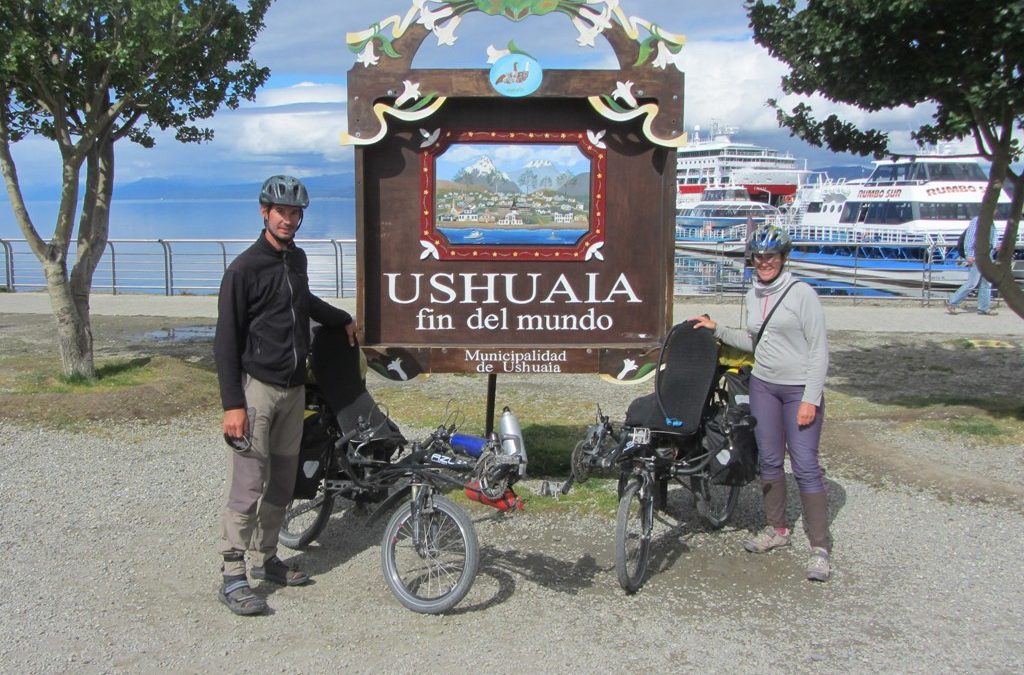


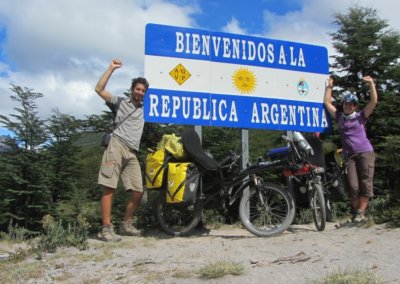
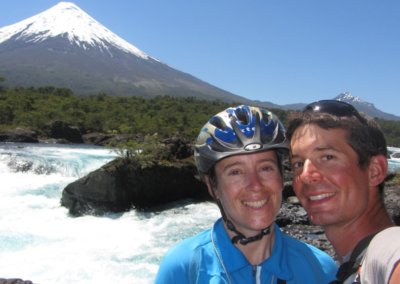


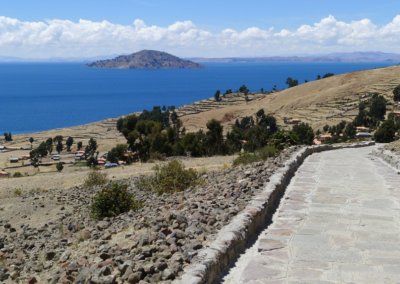
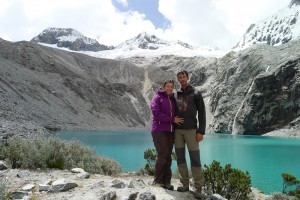

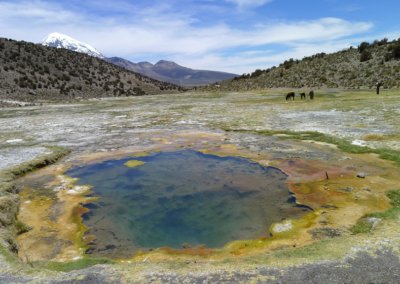
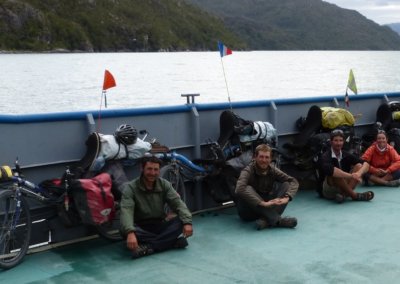
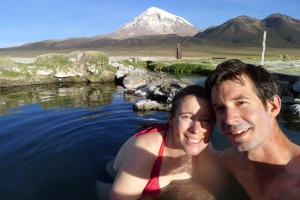
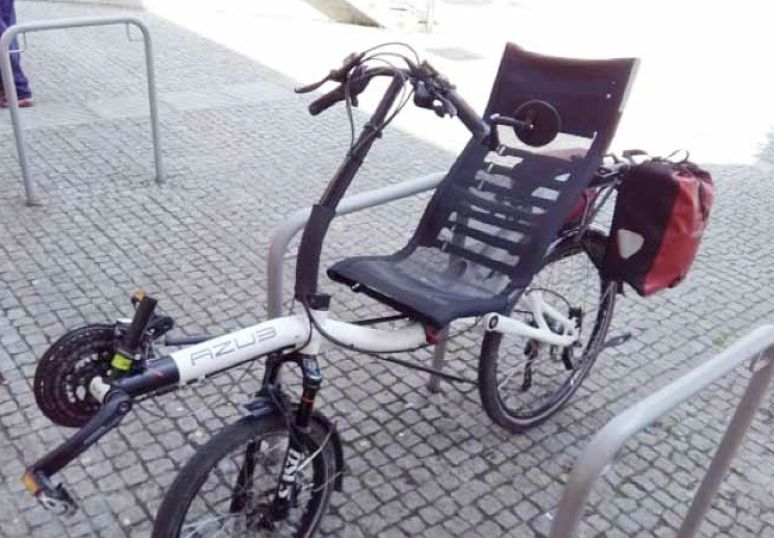
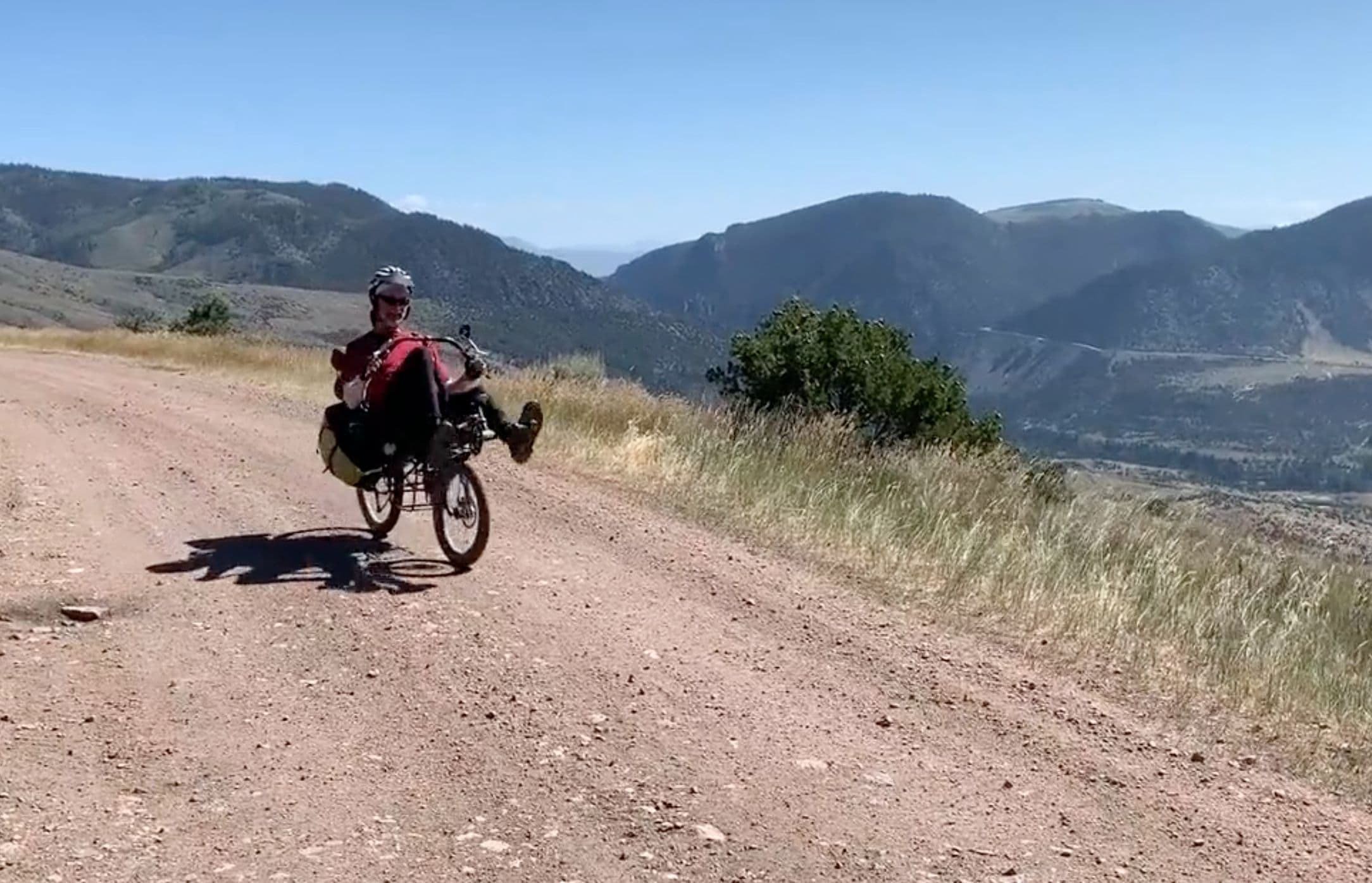


Join the worldwide group of AZUB fans
Get the latest stories, be inspired by our amazing builds and get some inside view.
You are close to join the fan group. Just see your inbox and confirm your e-mail address.